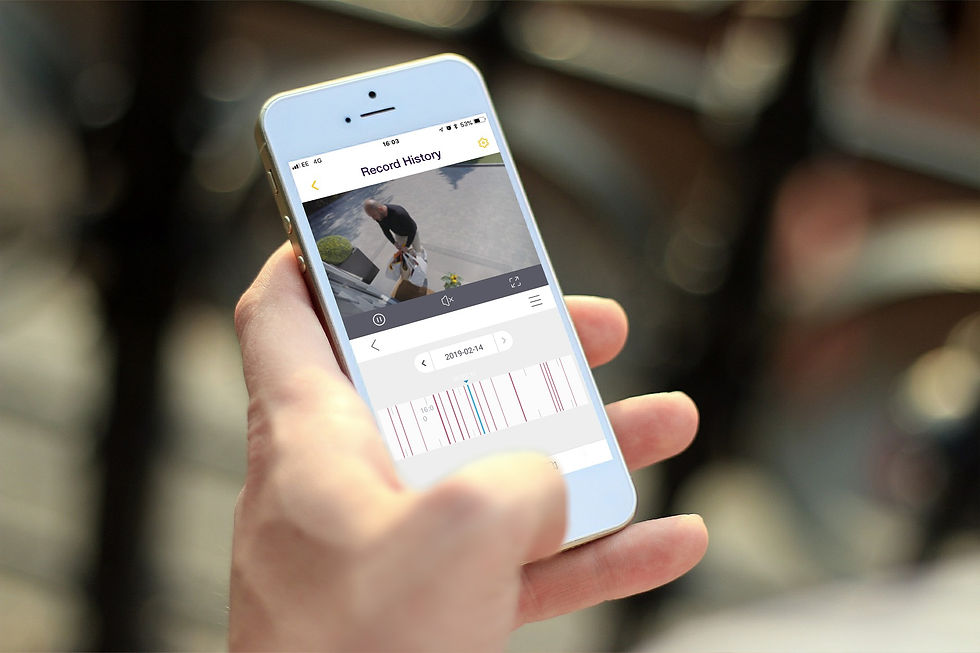Are you considering having CCTV fitted? Here's a good place to start.
- Keith Unwin
- Aug 28, 2022
- 3 min read
We’ll go through some of the often-asked questions when researching whether CCTV is the right option for your home security and the most common concerns a homeowner might have.

How many cameras do I need?
A very common question and one which only you, the user, can provide the answer. You should always be thinking about what you want to see on screen (i.e. the image each camera will produce) and not where on your house you think a camera ought to be fitted.
It's very tempting to look up to the top corners, under the eaves and guttering and think that's where they should be.

So, the best place to start is the most vulnerable potential entry point, and that's almost always around the back of the house. Do you have patio doors or French windows? You need at least one camera with a good view of these. Remember you may not actually see the patio doors in the image if the camera is located on the same wall. So, the camera needs to be set up to give a really good view of anyone standing in front of the patio doors, using one edge of the image lined up with the wall itself. Check to see if there are any secondary vulnerable spots, like back doors, kitchen windows and garden sheds that, with a little tweaking, can be brought into the image as well.

For a standard 'square footprint' house, you can usually adopt a 4-camera system, with perhaps 2 cameras round the back, one situated along the most vulnerable side (there usually is one) and one at the front. Again, much depends on the layout of the property, but the most popular position for the front camera would be on the opposite side to where the front door is, taking in as much of the approach to the front door as possible. Depending on circumstances, you can often capture a vehicle parked on the front drive at the same time.
What camera and recorder specification should I buy?
Most systems on the market will be HD and therefore should give you acceptable quality straight out of the box. The minimum camera resolution should be 2Mp. Higher resolutions will contain more picture information and therefore will give clearer images when using digital zoom to examine the recorded video footage. WiFi CCTC has not yet reached acceptable levels of reliability, and you may find that your broadband connection cannot cope with any more than 1 wireless camera in any CCTV system. Therefore, expect the installer to concern himself with the best way of routing cables from the cameras to the recorder. The most popular way to set the system up in your home would be to run cables into the loft and then down into a first floor (spare) bedroom, where the recorder can be set up. If the loft is suitable, with adequate power outputs, it's a good idea to leave the recorder in there. It's certainly the most secure spot to locate it if it's to be kept hidden from intruders. It can be a little inconvenient, though, if you need to use the playback facility on the recorder. If there is no accessible loft, cables can be clipped around the sides of the house and brought inside through one hole appropriately drilled through the wall. And sometimes an installer must get a little creative to ensure cables are largely hidden from view and are not susceptible to damage by intruders.
Can I view the camera images on my phone or tablet?
Yes, this is a standard feature now, and any installer will be able to set this up for you. To achieve this, the recorder unit will need to be connected to your internet router. If the two units are not in the same room (or even on the same floor) an alternative is used.
It's called a powerline adapter, and it connects the recorder to your router via the electric cables which provide power to you sockets. These extra devices cost around £30 and they're a highly effective solution when circumstances dictate.

What screen do I need to see the camera images?
A reasonably modern TV will have a number of HDMI inputs for auxiliary devices, so a CCTV recorder can be monitored from one of those channels. Alternatively, you can use a PC monitor if you have one sitting around. However you will notice a drop off in image quality from an HD TV, although most average users will find either acceptable.
Whatever your needs for CCTV around your home, fill in the contact form and we'll be able to talk you through all the issues and options available.
















Comments